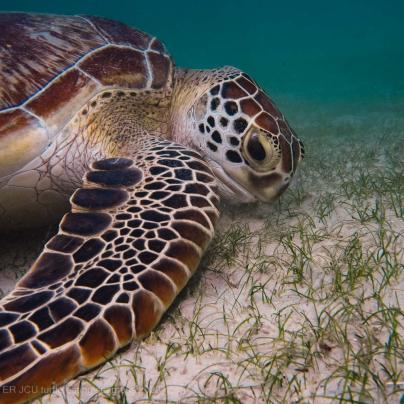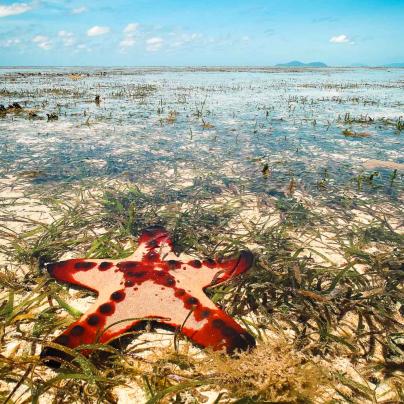What is the Great Barrier Reef Marine Monitoring Program?
The Great Barrier Reef Marine Monitoring Program (MMP) was established in 2005 to inform managers and the wider community about the condition of inshore corals and seagrass, and the effects of poor water quality from land-based runoff on these ecosystems.
Inshore monitoring has improved our scientific understanding of how the Great Barrier Reef is affected by pressures (e.g. cyclones, floods, rising ocean temperatures and land-based run-off), and informed our management decisions.
The inshore region of the Reef includes a diverse range of ecosystems, such as seagrass meadows and coral reefs. The inshore region is fundamental for the health and resilience of the whole Reef, by providing the critical link between coastal and offshore marine regions of the Reef by:
- supporting unique biodiversity, coastal and wetland habitats, iconic species and our socio-cultural values
- providing irreplaceable rich nursery and feeding grounds for many species of fish, prawns, turtles, and dugongs
- sustaining supporting cultural and social values, including our community life styles and livelihoods.
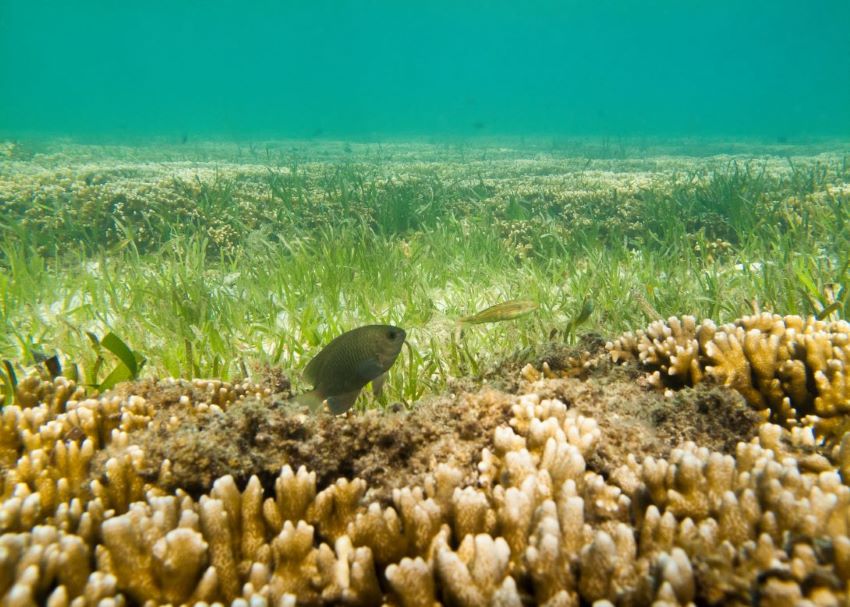
However, due to its proximity to the adjacent catchments, the inshore region and its ecosystems are often exposed to poor water quality associated with sediment and nutrient inputs from land-based runoff and flood plumes.
Routine monitoring of water quality, seagrass and coral condition conducted by the MMP occurs year-round. In addition to routine monitoring, the MMP also undertakes reactive flood monitoring. The MMP Water Quality teams assess the magnitude, extent, and duration of flood plumes, particularly following extreme ‘events’ such as floods and cyclones.
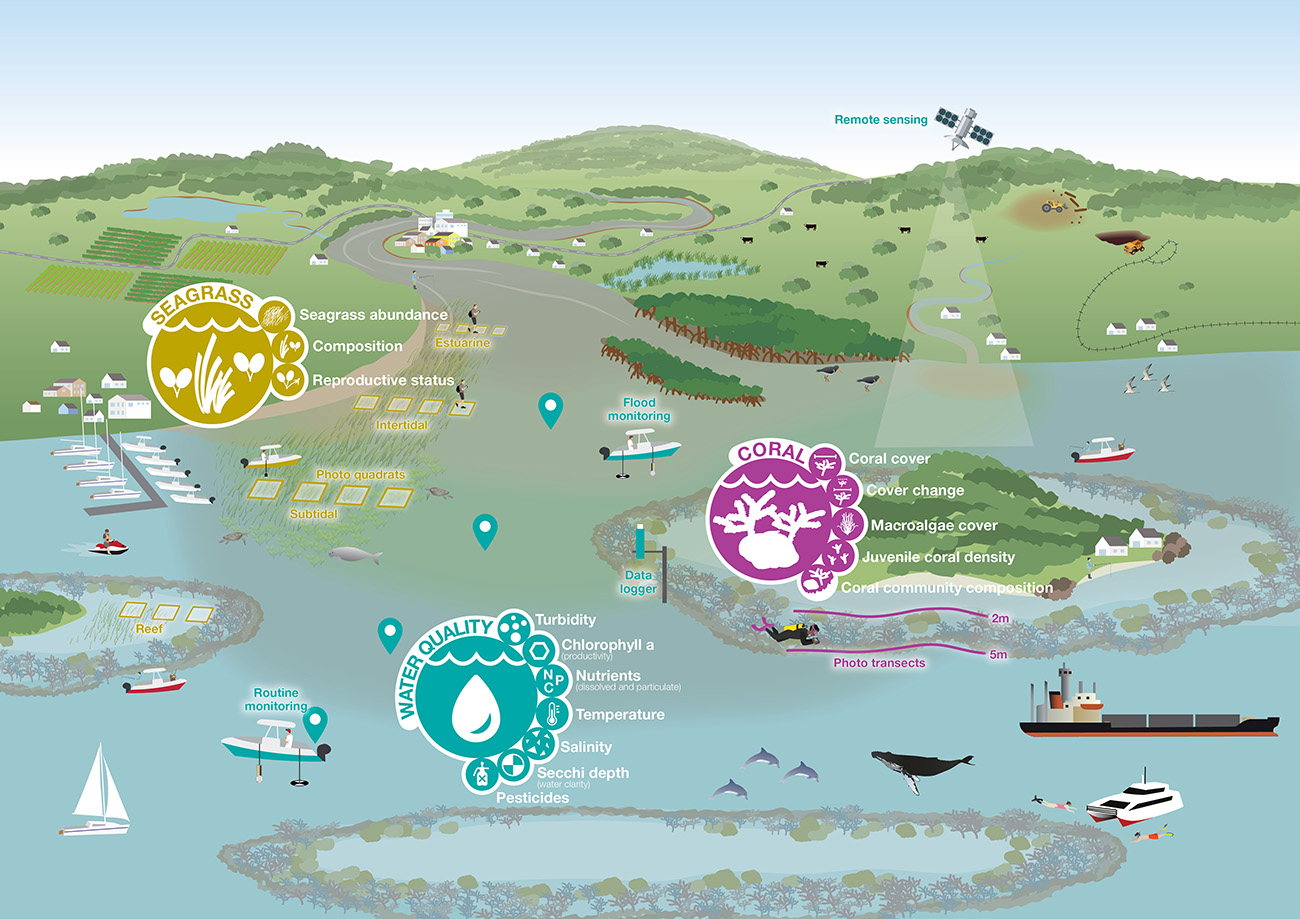
Results on trends and conditions and how data is collected are published yearly in the technical reports for water quality, seagrass, and coral available in our eLibrary. Detailed methods can be also found in in the associated annual Quality Assurance and Quality Control manuals.
Summary of latest results can be found below:
Why do we monitor?
Poor water quality has negatively impacted the inshore ecosystems resulting in loss of habitat, decline in biodiversity, and disruption of connectivity between habitats and species. Declines in water quality and changes to the ecosystems have also impacted the communities and industries such as recreational fishing and tourism.
Monitoring water quality and the health of key inshore ecosystems and their sustainability is consequently crucial for the understanding and management of local pressures on the inshore region to ensure the health and resilience of the entire Reef.
- We need to know:
- when and where river flows and flood waters affect inshore marine waters, and what pollutants are carried by them
- how extreme events and multiple pressures over many years affect important Great Barrier Reef ecosystems
- whether habitats are recovering, based on long-term trends in water quality parameters such as turbidity, nutrients, sediments, and condition of coral and seagrass habitats
Where do we monitor?
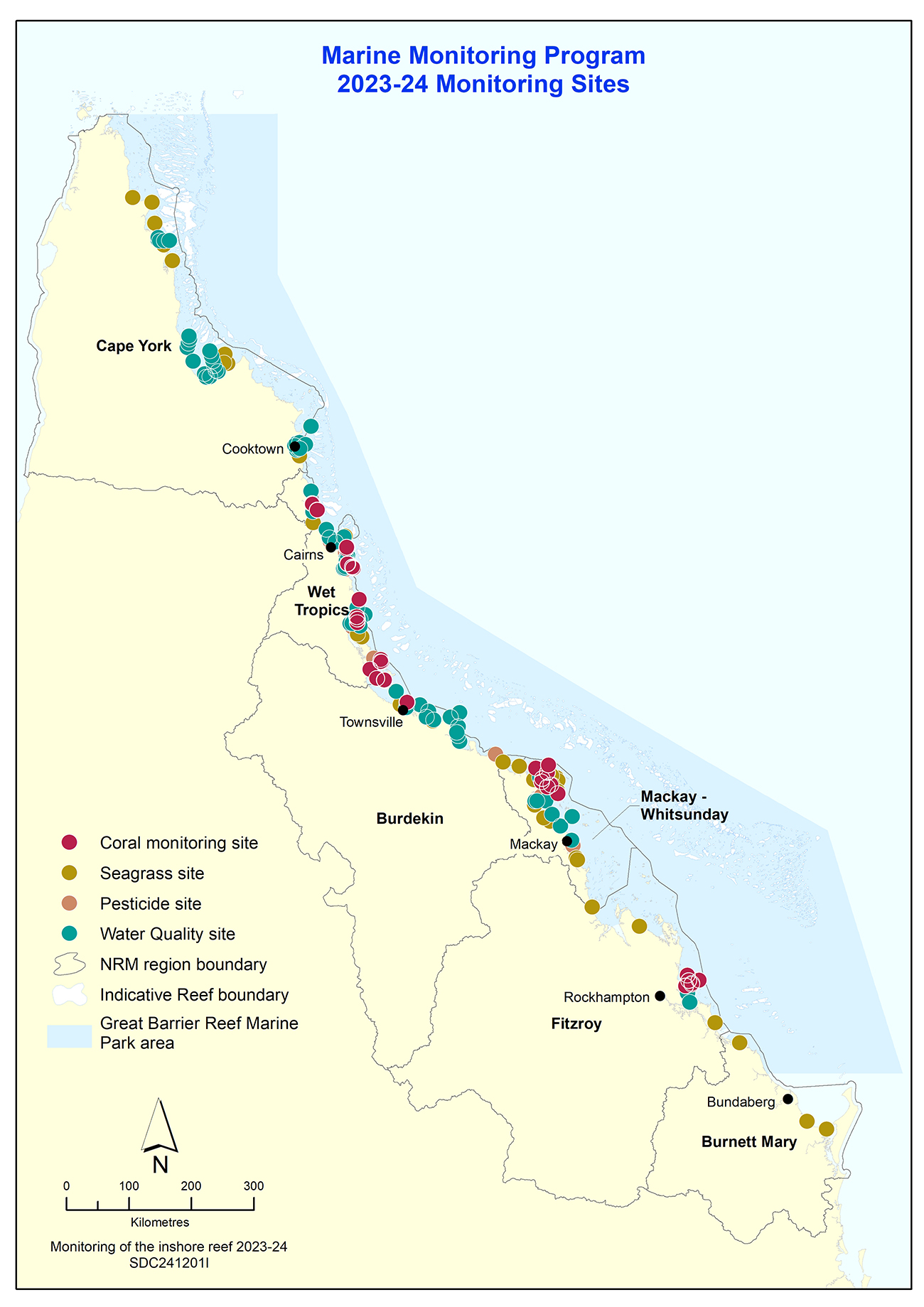
Who is involved?
The program is coordinated by the Reef Authority. The achievements of the program are due to successful and enduring partnerships.
- Our major partners are:
- Australian Institute of Marine Science
- James Cook University -TropWater
- Cape York Water Monitoring Partnership
- University of Queensland
MMP currently undertakes monitoring in partnership with Traditional Owners on their Sea Country.
In Cape York, water quality monitoring is led by Howley Environmental Consulting and members of the Cape York Water Partnership, including Yintingga Aboriginal Corp, Rinyirru Aboriginal Corp, and Yuka Baja Muliku Rangers.
Seagrass monitoring is led by James Cook University/TropWater in collaboration with Traditional Owners from the Wuthathi, Kuku Yau, Yuku Baja Muliku and Girringun groups.
Interactive Marine Monitoring Dashboard
The MMP Dashboard presents synthesised results of the Marine Monitoring Program’s yearly activities. Click on the map to view the interactive dashboard via the Reef Knowledge System.
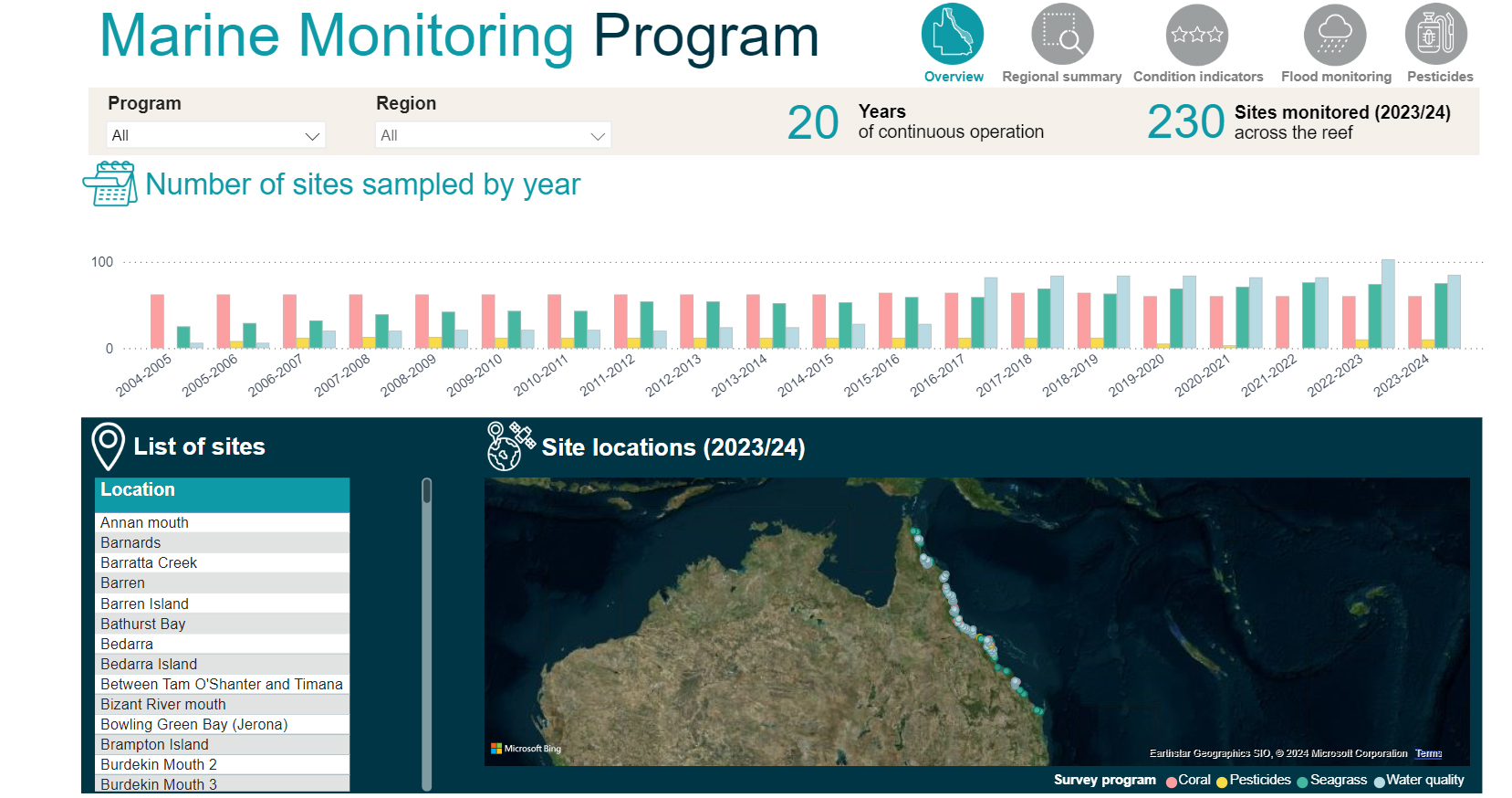
How does the program connect to other activities?
Marine Monitoring Program data informs the Paddock to Reef Integrated Monitoring, Modelling and Reporting Program and is used to evaluate progress towards the Reef Plan 2050 Water Quality Improvement Plan targets, objectives and outcomes. It also informs progress against the objectives under the Reef 2050 Long-term Sustainability Plan.
We share the results will a broad range of stakeholders through seminars, Reef Health updates, fact sheets, briefings, and reports. The five-yearly Outlook Report considers the information in its assessment of the Great Barrier Reef’s health, pressures, and likely future.
As part of our toolkit for managing the Great Barrier Reef, information is used in many ways. For example, after extreme events such as floods and cyclones, the Field Management Incident Response team use it inform Response Plans. Data from the program are also used to evaluate water quality against legislated water quality guidelines.
